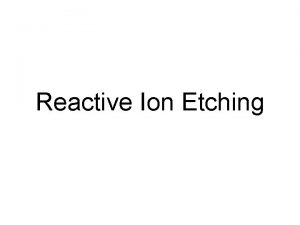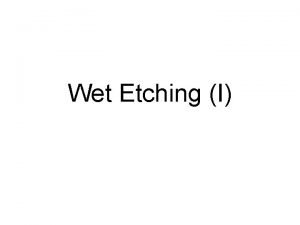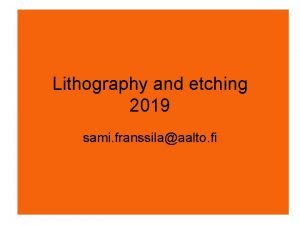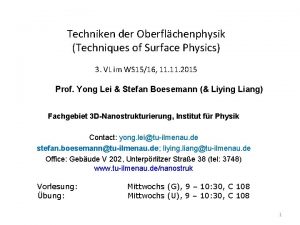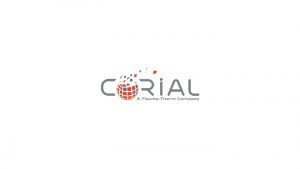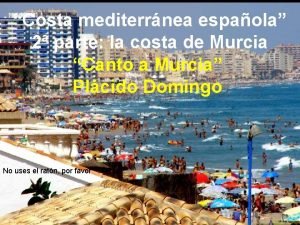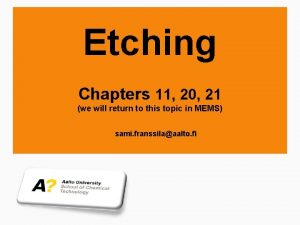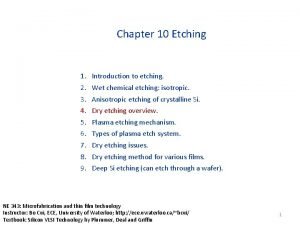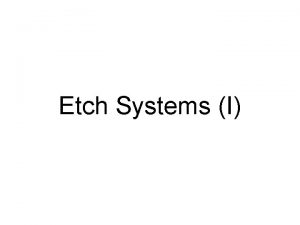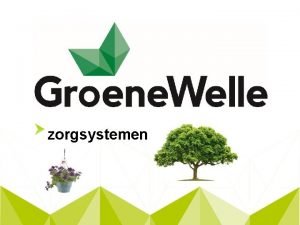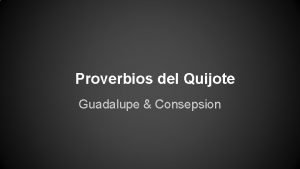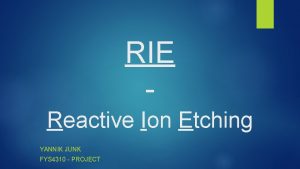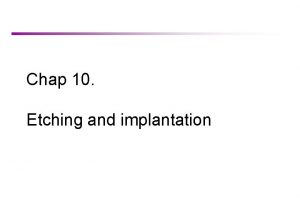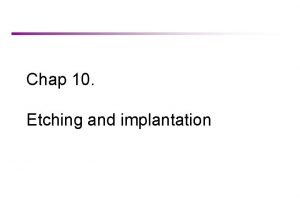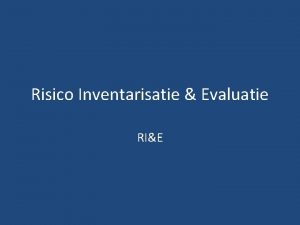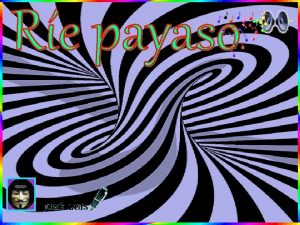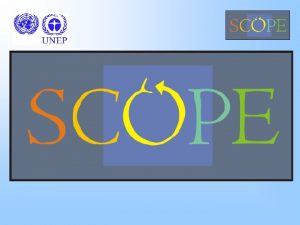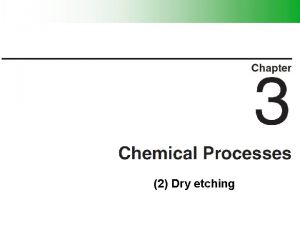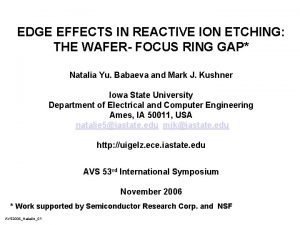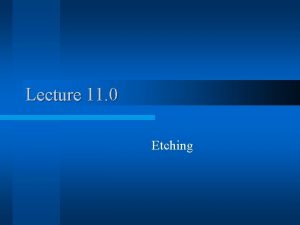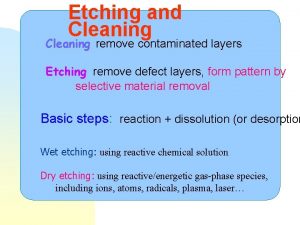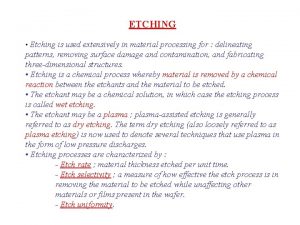Reactive Ion Etching Outline Reactive Ion Etching RIE
















- Slides: 16

Reactive Ion Etching

Outline • • Reactive Ion Etching (RIE) Playing off physical and chemical effects Controlling etch profile and etch selectivity Use in making nano-structures: an example

RIE: Playing Physical Bombardment Off Against Chemical Attack • • Pressure Power (self-bias voltages; imposed voltages) Gas (plasma) composition Flow rate Use of residues Result is the ability to control selectivity Result is the ability to “tune” between isotropic and anisotropic etching

Isotropic and Anisotropic Plasma Etching • Isotropic is purely chemical. • Anisotropic profiles are a combination of chemical and bombardment. • Anisotropic profiles can also be controlled with sidewall protective films (residues). • Plasma etching is a balance between: – Selective removal (what is intended versus what is protected) of material through chemical reactions. – Nonselective removal of material through ion bombardment (pressure and power related). – Deposition of sidewall polymers for passivation. – These parameters must be balanced to maintain critical dimensions.

Isotropic Profile Public Domain: Image Generated by CNEU Staff for free use, 2009

Anisotropic Profile Aspect ratio = D W Public Domain: Image Generated by CNEU Staff for free use, 2009

Extreme Example of Profile Control Available from Plasma Etching Isotropic etch Pressure Increased Anisotropic etch Pressure Reduced In the RIE

Use of Residues

An Example: Use of Residues in Si Etching for Profile Control MFC’s Vent/Purge TC 1 Ion Gauge Cathode with backside cooling CF 4 Roughing Valve O 2 N 2 Typical Gasses Throttle Valve Impedance Match Blocking Capacitor RF Power Source Turbo Pump Mechanical Pump TC 2 Foreline Valve Public Domain: Image Generated by CNEU Staff for free use, 2009

An Example: Use of Residues in Si Etching for Profile Control


An Example of Using RIE to Make Nano-structures Process Flow: The “recipe” to be followed

Deposit Si film on a substrate E-beam lithography Deposit metal hard mask and lift-off

RIE etching Hard mask provides selectivity Metal hard mask removal Result: Array of nano-columns or nanowires

FESEM Images Top view Issues: Plasma damage? Residues remaining? 30 degree tilted

Summary • RIE can be used to give excellent etch profile control • RIE can be used to give excellent selectivity • RIE can be used to make nanostructures by subtractive processing
 Rie
Rie Chain conveyor shot blasting machine
Chain conveyor shot blasting machine Anisotropic meaning in chemistry
Anisotropic meaning in chemistry Wet etching vs dry etching
Wet etching vs dry etching Ion etching
Ion etching Las estrellas celosas nos miraran pasar
Las estrellas celosas nos miraran pasar Rie thomsen
Rie thomsen Rie
Rie Cuando rie una huertana
Cuando rie una huertana Oxide etcher
Oxide etcher Hiperbole dibujo
Hiperbole dibujo Dry etch
Dry etch Rie
Rie Rie
Rie Registro de instituciones educativas (rie)
Registro de instituciones educativas (rie) Stigas inloggen
Stigas inloggen Maldicientes significado
Maldicientes significado
